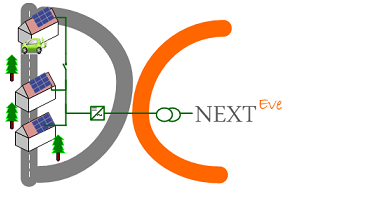Home
Home
- Details
- Category: Uncategorised
- Published: Monday, 07 November 2016 13:29
- Written by Super User
- Hits: 749999
Microgrids are an important concept in the emerging power industry field, and they usually refer to distribution topologies that can work either as a stand-alone subsystem or connected to the main power grid. They are widely recognized as an innovative ecosystem when it comes to a flexible and reliable option for the integration of distributed energy renewable resources (DER).
Even though the vast majority of recent demonstrations for microgrids use AC power transfer, a traditional dominant scheme, DC power distribution systems are taking ground especially for applications where the end-use loads are natively DC. Industry drivers in ICT and Telecommunication Industry already took initiatives for standardization with respect to DC microgrids in these specific applications such as data centres for example. Furthermore, deployments and demonstration projects for plugged-in electric vehicles (PHV) as well as the exponential spreading of photovoltaic systems installed especially on residential buildings, with Germany leading the market, increased the research interest in LV-building level DC microgrids.
Several demonstrations for LV DC microgrids showed that when onsite renewable generation, electric vehicles and storage systems are present, DC-based microgrids may offer significant benefits compared to their AC counterparts, such as: higher power efficiency due to fewer conversion stages, higher reliability, lower capital cost, simpler control and more close to universal control strategies, higher power quality and disturbance survivability.
It is to be noted however, that the research on DC microgrids mainly focuses on either comparisons with AC counterpart configuration of the same microgrid in terms of operation (scheduling and optimal operation), or on improvements in the control methods. The current state of the art in the DC building level microgrids architecture is most of the time limited to a radial configuration with a single DC supply bus. As building level DC microgrids expand, it is expected that meshed clusters of microgrids connected at distribution feeders will emerge. The project focus is to analyze several modelling, operation and control methods of clusters of microgrids in a more comprehensive range of possible architectures, where an important consideration in the design of DC microgrids is that of power quality.
This research project is a collaboration between the research team at MicroDERLab from Politehnica University of Bucharest, Romania and the research team of Prof. Josep M. Guerrero from Aalborg University working on the project "Intelligent DC-Microgrid Living Lab".
“This project has received funding from the European Union’s Horizon 2020 research and innovation programme under the Marie Sklodowska-Curie grant agreement No 708844”.


